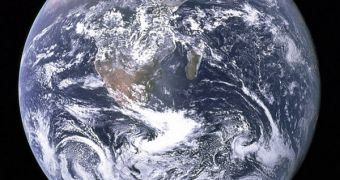According to the conclusions of two new scientific studies, it would appear that the material which makes up Mercury, Venus, Earth and Mars did not originate in the protoplanetary disk around the Sun.
When the star formed, not all of the gas clouds that collapsed to ignite it made it into the star. The leftover material was gathered in a structure called the protoplanetary disk, which began to swirl around the young star.
Our understanding of planetary formation processes indicates that the rocky planets, gas giants, dwarf planets, asteroids, comets, meteorites and all other bodies and matter that exist within the solar system today were produced from this single disk.
What the new studies are suggesting is that neither Earth nor the other rocky planets were formed from this material. Experts base their conclusions on studies of solar particle samples that were collected by the NASA Genesis probe.
This was a sample-return mission that crash-landed back on Earth in 2004, in the Utah Desert. When the return capsule's parachutes failed to deploy, it slammed into the ground at more than 200 miles per hour, Space reports.
Only a few of its samples could be saved, but the data collected by analyzing them indicate that the basic building blocks present in the Sun are very different from those found on Earth and the Moon.
The main conclusion that can be drawn from these readings is that an unexpected, yet-unidentified process took place more than 4.5 billion years ago, that changed the characteristics of the building blocks that would later form the rocky inner planets.
This process must have undoubtedly occurred after the Sun had already formed, the research teams say.
“From any kind of consensus view, or longer historical view, this is a surprising result. And it's just one more example of how the Earth is not the center of everything,” explains the lead author of a new study, University of California in Los Angeles (UCLA) expert Kevin McKeegan.
“Before Genesis and the present measurement of the [nitrogen] isotopic composition of the solar wind and by extension of the sun, it was not possible to understand the logic of such [building block] variations,” explains expert Bernard Marty of Nancy University in France.
“Now we understand that the starting composition, the solar nebula, was poor in 15N, so that variations among solar system objects are the result of mixing with a 15N-rich end-member,” says the scientist, the leader of the second study.
Details of the new investigation appear in the June 23 issue of the top journal Science.

 14 DAY TRIAL //
14 DAY TRIAL //